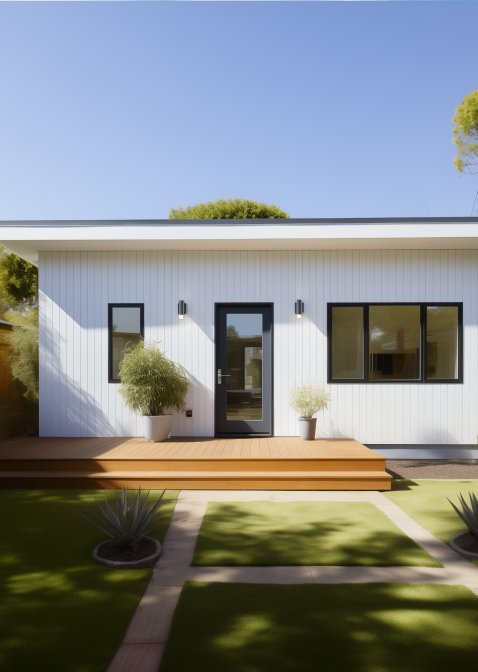We can confidently say that backyard cottages, or ADUs, are a certain trend in the sphere of construction. More and more people are becoming obsessed with having one on their lot. But what exactly is it? Well, as it may be clear from the name, an accessory dwelling unit (ADU), represents a building that is usually smaller than the primary house, but located on the very same lot. Normally, they serve for a variety of different purposes that we will take a closer look at later in the article.
Simply because in urban areas every square foot weighs gold, having an ADU seems like a logical solution for the homeowners who want some extra space without buying new property. According to the legislation, ADUs have to be smaller than the primary house, ranging in size from a few hundred square feet to around 1,200 square feet. There are no boundaries when it comes to building backyard cottages, the choice is yours. From traditional to modern, this housing option can be customized to suit the demands and preferences of the client.
In many areas, backyard cottages are subject to zoning and building regulations, and may require permits and inspections before they can be constructed. To avoid such headaches, many people hire general contractors who help with the construction of an ADU as well as regulations.
Size and purpose are two characteristics that allow us to speak about differences between cottages and tiny homes. A cottage is typically a small, cozy house, often with a traditional, rustic aesthetic. Cottages are usually built as permanent residences, and are designed to be comfortable and livable year-round.
On the other hand, a tiny home is a compact, portable dwelling designed to maximize living space while minimizing environmental impact and cost. Tiny homes are often built on wheels or trailers, and can be moved whenever the owner wants. They are generally smaller than cottages, with a focus on functionality and efficiency rather than traditional aesthetics.
While both cottages and tiny homes can provide affordable, sustainable housing options, they serve different purposes and are suited to different lifestyles and preferences.
There are several different types of backyard cottages, each with its own unique design and purpose. There are many different types of backyard cottages to choose from, and the ideal cottage for you will depend on your unique lifestyle and preferences.
Builder tend to construct backyard cottages of the following types:
This building is not connected to the primary house in any way. Normally they possess all the necessary utilities like kitchen, bathroom, and living areas.
A garage conversion involves transforming an existing garage into a living space, often with a separate entrance and kitchen facilities. This is a cost-effective way to create a small residency without the need of constructing a separate brand-new building.
A granny flat is a self-sufficient living unit that is connected to the primary house, offering a separate and private living area within the same property. Granny flats are typically designed for older relatives or adult children who want their own living space but still want to be close to family.
A pool house is a backyard structure designed to provide a space for changing and relaxing around a swimming pool. Many pool houses include additional amenities, such as a kitchen, bathroom, and outdoor entertaining areas.
A studio is a compact, standalone unit that is entirely self-contained and used primarily as an art or music workspace, a home office, or a guest room. It can be connected to or separate from the primary residence and is usually designed with functionality as the primary objective, rather than extravagance.
The examples provided earlier are just a few possibilities to consider. It’s important to carefully evaluate your needs and desired uses for the cottage in order to select the best type for you. Whether you plan to use it as a rental property, guest house, or additional living space for family members, there is a backyard cottage design that can suit your specific requirements.
If you are still wondering why you would want to have an ADU on your lot, take a look at the following list of advantages of possessing such units.
Backyard cottages offer several benefits, including:
The short answer is yes, however, it has certain restrictions. Firstly, the cottage should fit local requirements concerning the construction of such buildings. Additionally, the cottage must be located on a parcel of land that is large enough to support two separate dwellings, and the sale of the cottage must comply with all applicable laws and regulations.
It’s important to consult with a real estate attorney and local authorities to ensure that all legal requirements are met before attempting to sell a backyard cottage separately in California
Deciding whether a backyard cottage is right for you depends on several factors, including your lifestyle, needs, and budget.
Here are some factors to consider:
By considering these factors, you can determine whether an ADU is the right choice for your needs and lifestyle. It’s important to consult with a local builder or contractor to assess feasibility and cost before making a final decision.











